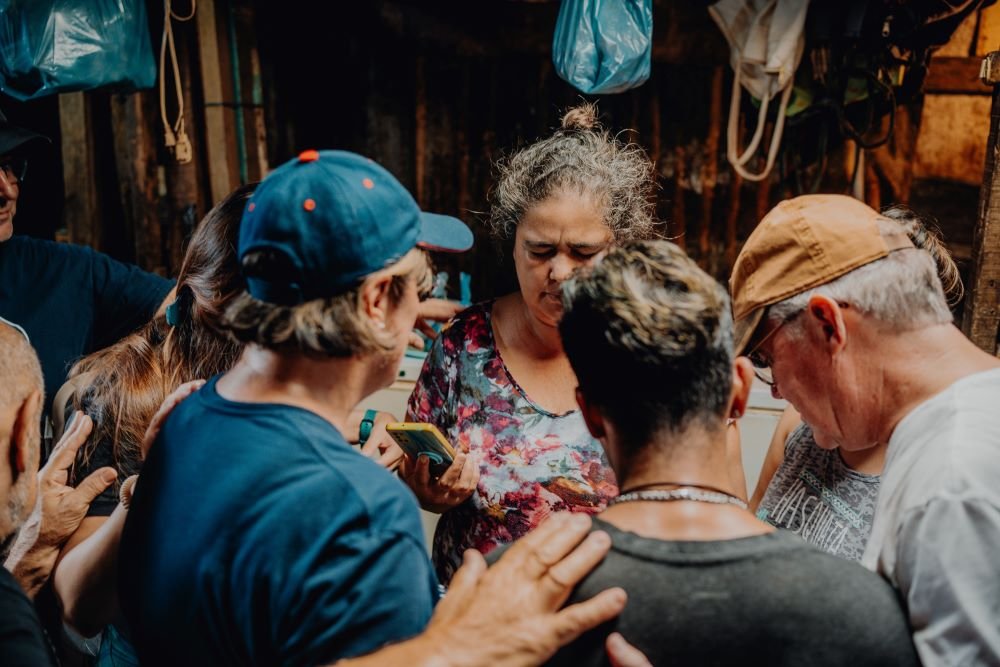Four Questions to Guide Creating a Global Missions Partnership
In another article, I covered several important benefits for a local church entering into a global missions partnership with a missionary team overseas. Feel free to start there if you’d like.
To be honest, when I first arrived in Houston, I quickly became convinced many of the churches in Houston cared little about international missions. The conversation here in town has been loudly directed toward local church planting within the Houston metro, as opposed to sending planters to other places in the US or sending missionaries to plant churches among unreached peoples. While I’ve been very encouraged by the attention given to local church planting, this led me to make an unfortunate assumption, namely that global missions was low on the list of priorities for our churches.
Much to my surprise, this is far from the truth. When I started floating the idea of an intentional equipping in our own churches specifically for sending to the nations, I repeatedly heard encouragement. In fact, more than once, I was told church leaders had been hoping for just this kind of thing, not really knowing where to find it.
And then came the questions. Church leaders began to start asking about the ways they could get their churches involved in global missions partnerships. With little direct connection to specific missionaries, churches often don’t know where to start.
If you find your church in a similar position—having a desire to begin healthy overseas missions engagement and not knowing where to start—then here are four questions to help guide you to your first healthy international partnership.
1. Do we already have missionaries on the field?
The first place for any church to turn when it comes to international missions partnerships is their own membership. If a church has members, or past members, on the field serving with a missionary team, entering into a partnership with their ongoing work is an excellent way to support them and involve the broader church in a missions vision.
“The first place for any church to turn when it comes to international missions partnerships is their own membership”
Sending missionaries well requires supporting those you send. If a church is intentional about sending, then it actively looks for those inside its own congregation who should be equipped and sent into Great Commission tasks. Then, it supports those it sends with ongoing care and partnership.
It’s never too late to establish a partnership with those who have left your church to spread the gospel overseas.
2. Do other local churches in our association have partnerships?
Many churches do not have sent ones on the field with a prior connection to their church. In this case, looking to other nearby churches with a partnership is often a great start. In my role at the association where I serve, my hope is to establish many such cooperative relationships between churches in our association to partner with specific missionary teams on the field sent out of churches in our association.
There are great benefits from partnering with missionaries overseas sent by a sister church in your same city or county. These churches can work together to plan trips to engage in the work and support the missionary efforts. This is especially helpful for normative size churches that may need to pool volunteers with another church to form a short-term team. In addition, when the missionaries are stateside, they are local to your area and can also spend time in fellowship and reporting with your church as well. Churches can plan joint events where they pray for and care for the missionary team together, and their proximity allows them to make all of these plans easily.
3. What agencies are we already supporting?
In addition to looking toward other churches in your local network or association, a church seeking their first missionary partnership should consider agencies they are already supporting. It surprises me how many conversations I have with pastors and church leaders in which they are unaware that they are already financially supporting an international missions agency by virtue of their cooperation in our denomination.
A young church planter in our association recently returned from his church’s first trip to visit an international missionary in South Asia. Upon returning, the team was convicted that a partnership with the ongoing work there would be an important part of their church’s mission. A new, small church plant, the pastor was telling me they knew they would need to send people from their church long term, but he was concerned about how they would fund such an endeavor.
What I told him next floored him. Their church was already funding the missionaries they would send! Furthermore, they were already financially supporting the missionary team they had visited in South Asia. As a part of the SBC, his church was working with an IMB missionary, an agency they were already cooperatively supporting, and the agency they would use to send any missionaries they sent. One of the great benefits of cooperative sending with the IMB is the fact that missionary support is taken care of through the cooperative funding program. The funding dilemma was already solved. Their small church already had its financial support mechanism in place and didn’t know.
If you happen to be an SBC church that does support the Cooperative Program, I would highly encourage you to consider a partnership with IMB missionaries on the field. You already financially support them, and working with the structures you already support will allow you to lean into future sending as well.
4. What people groups are we engaging locally?
Finally, consider the local opportunities for cross-cultural engagement right around you. A number of churches are already involved in some form of refugee ministry in their own city. Others are actively engaged in cross-cultural ministry of other types with local immigrants. This is often a good place to start when considering potential partnerships overseas.
“ A local church can work to reach them both here and there with wise partnerships overseas and active gospel-centered engagement here in town.”
Connecting your work with local unreached groups of Hindu or Muslim background peoples with an international missions partnership to those same areas overseas can produce a really healthy missions vision for your church.
For instance, here in Houston, we have over 75,000 Urdu-speaking Pakistanis. Many of these people are completely unreached with the gospel, and gospel ministry is perhaps even more pressing back in their home country. A local church can work to reach them both here and there with wise partnerships overseas and active gospel-centered engagement here in town.
Keelan Cook is a Missiology professor and the Associate Director of the Center for Great Commission Studies at Southeastern Baptist Theological Seminary. His primary areas of ministry focus include urban missiology, church planting, church revitalization, and unreached people groups.
A version of this article originally posted on The Peoples Next Door.
We’ll send one succinct weekly email
with the best news, events, and info
for churches in the Houston area.
Photo by Brett Zeck on Unsplash










How can you look up from the needs and ministries of your local church to strategically identify, equip, send, and support people for ministry? Sending Pathways helps you do just that!